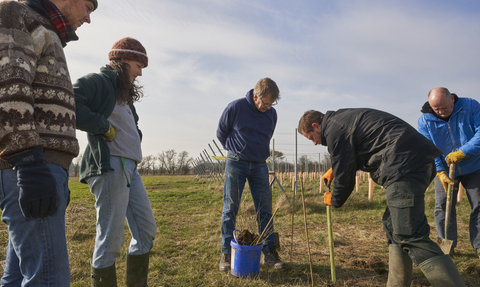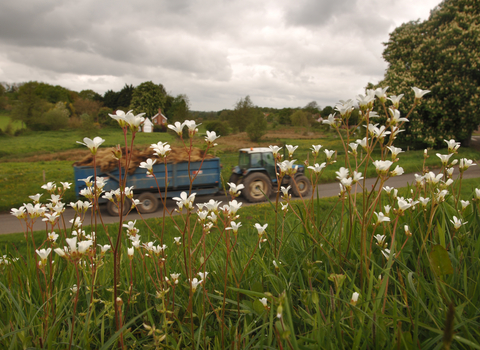
Old Hall Farm tree planting volunteers (credit: Richard Osbourne)
Claylands Wilder Connections
Between October 2021 and March 2023, we ran the Claylands Wilder Connections project. During this project we supported communities and landowners to improve the connectivity of wildlife habitats across key parts of South Norfolk. Our focus was on the fabric of the countryside, including hedgerows, ponds, copses, trees, and meadows.
We worked with local communities and landowners to identify and deliver relevant projects on the ground with the aim of improving habitat connections for wildlife, while increasing biodiversity and resilience to climate change within the existing landscape.
Working with landowners in the target areas was vital to delivering the project’s ambitions. This involved farmers, parish councils, community groups, schools, and other individuals and organisations. The project explored how we can best support informed decision making and implement best practice land management by providing data, resources and training. The project also had a significant budget for facilitating improvements on the ground, such as restoration and creation of ponds; new hedgerow planting and gapping-up; establishing new woodland areas; and enhancing or creating floristically diverse buffers, margins and meadows.
Key achievements of the Claylands Wilder Connections Project:
- 57 ponds restored
- 6,000 metres of new hedgerow planting and gapping up
- 1,282 trees planted
- 1.1 hectares of woodland or scrub planted
- 20 hectares of meadows, wildflower strips etc enhanced
- 36 practical conservation tasks completed, involving 101 volunteers
- 50 events run and attended by over 1,400 people
- Production of a wide range of resources to help landowners and communities survey, plan and manage their land
Video highlights

Tractor in the Claylands (credit: M. Watson)
The South Norfolk Claylands
Learn more about this unique landscapeThe Claylands Wilder Connections Project was funded by the Government's Green Recovery Challenge Fund. The fund was developed by Defra and its Arm's-Length Bodies. It was delivered by The National Lottery Heritage Fund in partnership with Natural England, the Environment Agency, and the Forestry Commission.

